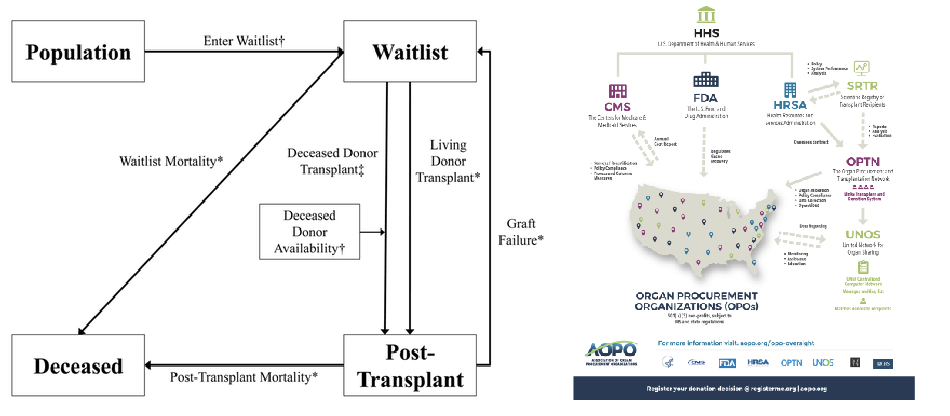Social Structure and Institutions
Topic overview
the ontology of social structure
the relationship between social structure, socialization, and social interaction
how institutions structure social interactioninstitutional inertia
institutionalization: thinking historically about institutions
Readings
Brym, Chapter 4: p. 87 – 99
Optional: Selection from John Levi Martin,Social Structures
Social Forces, Culture, Structure
Structure - stable patterns of social relations
Networks
One way to assess the objective character of some feature of society is by observing how actors, organizations, and institutions are networked
A network is a set of social individuals that are linked by communicative acts
Economic exchange
Friendship
Employment relationships
Family relationships
The structure of social networks
Node: an individual point of contact
Dyad: a social relationship between two nodes - ex. friendship between two people
A dyad is the most basic unit of network structure
Takes two to make, but only one to die

Triad: a social relationship between three nodes

Network analysis
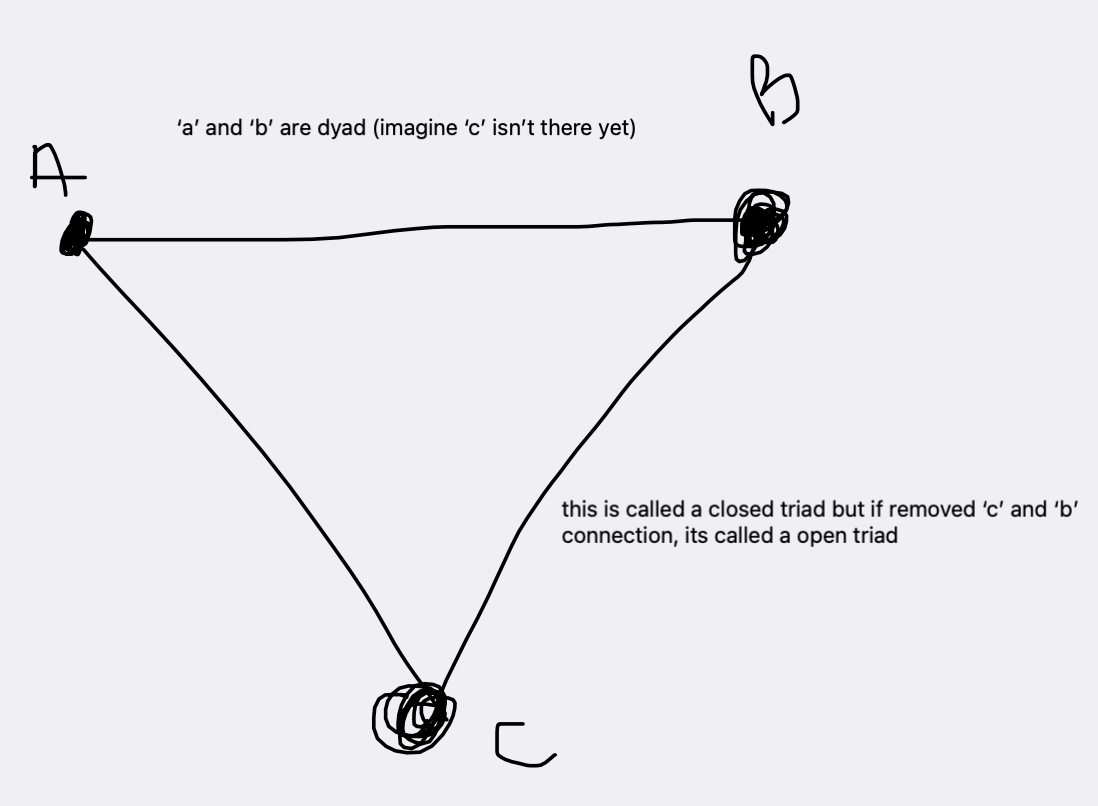
Number of nodes - number of nodes (3 nodes)
Number of connections - this image is a closed triad
Centrality - number of connections a nodes
Path distance -

Network analysis of “Friends”, season 1
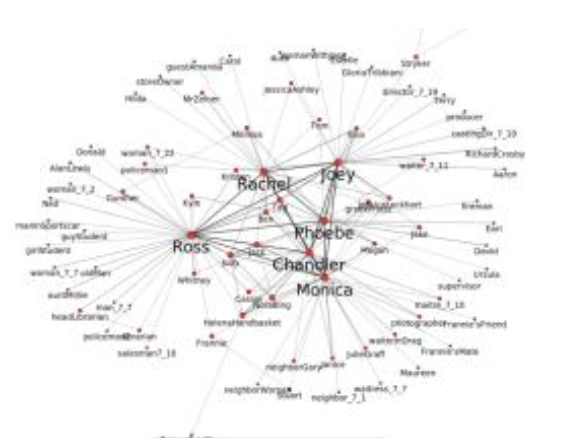
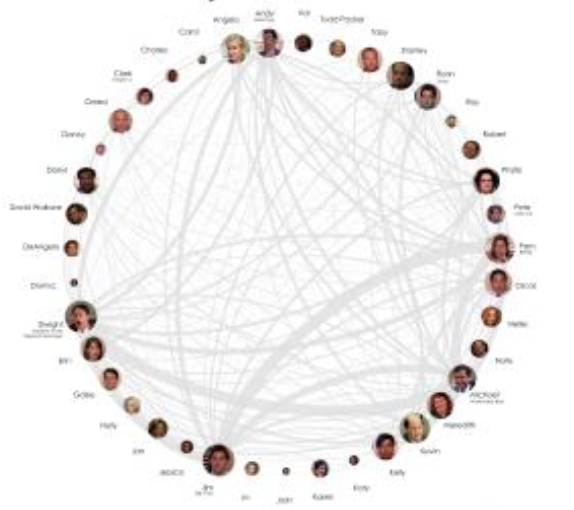
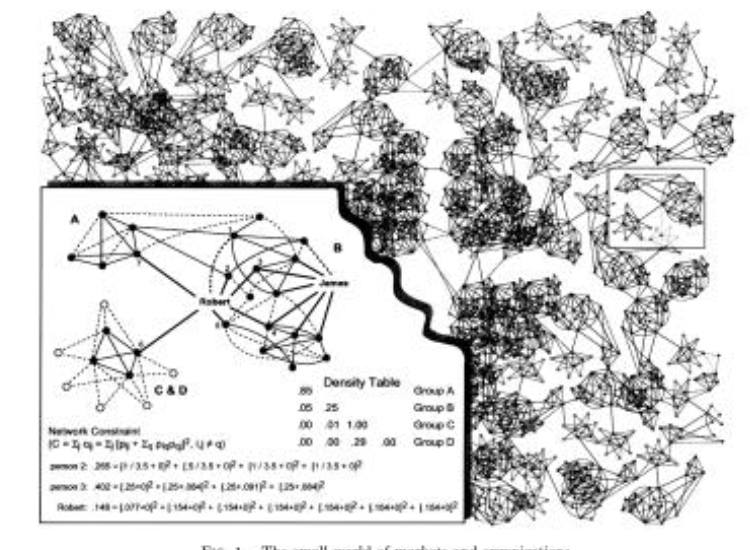
Network composition and the built environment
The objective organization of the built environment influences the structure of social networks - depending on the setting of the environment, if the work is dealing with complex problems you want an environment that is best suited for that kind of work (image on the left). if the environment is dealing with just individual work then its best to have an environment that limits the networks (image on the right)

Network analysis slide 10
Network analysis reveals the objective structure of a social group, without necessitating any analysis of the content of interaction - direct connections are different from mutual connections, map a structure of network

Social capital
Social capital: the networks or connections that people have
Increased network centrality = increased social capital associated with increase social capital
BUT social capital is not only about connections, but about the quality of connections
People draw on their own social capital when they deploy their networks for some benefit (for example, asking for a favour)
The strength of weak ties
Granovetter (1973)
Job seekers network of weak ties linked to being hired
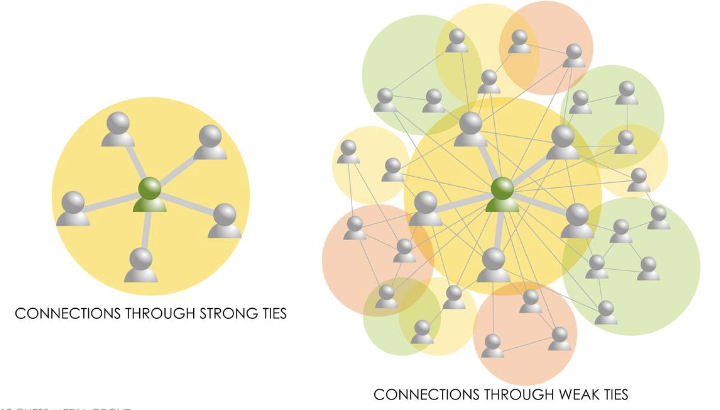 strong ties - close friends, family
strong ties - close friends, family
weak ties - acquaintances, cashier or barista, “father’s colleague”
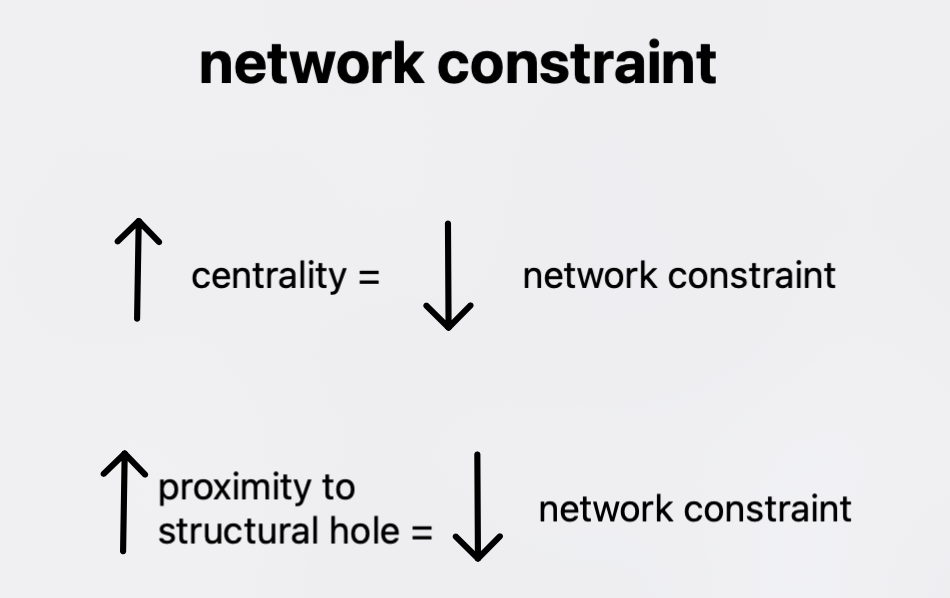 network constraint - represents mathematical relationship between several variables
network constraint - represents mathematical relationship between several variables
Structure + Agency
How does network composition influence creativity?
Burt (2004) “Structural Holes and Good Ideas”
Nodes: 673 supply chain managers at a large electronics company
Research question: What is the relationship between structural position and the likelihood of having “good ideas”
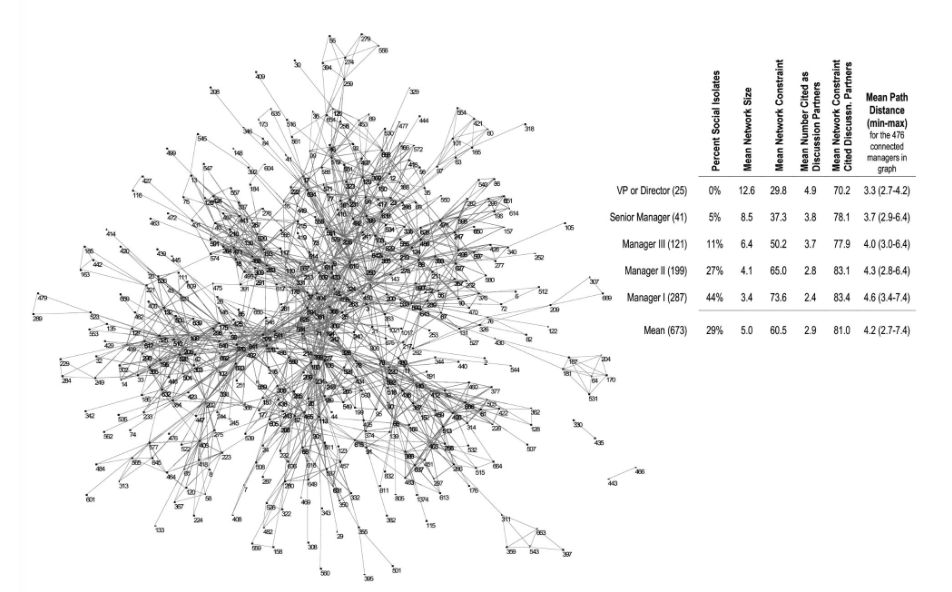

Who has good ideas?
“From your perspective, what is the one thing that you would change to improve [the company's] supply-chain management”
Answers evaluated by top management
Results: - starts with a survey
1. “Managers constrained in a closed discussion network were less likely to have valuable ideas”
2. No control variables – education, age, company rank – are associated with idea value when network density is considered
education + good idea?
increase education = increase p(GI)
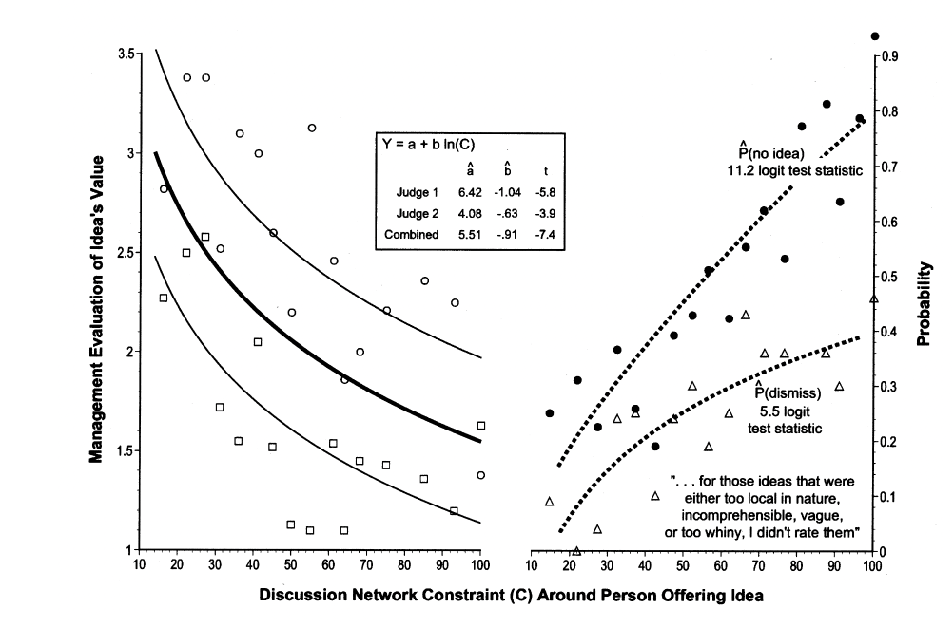 NC increases = ideas decrease
NC increases = ideas decrease
Networks → Organizations
Networks are the most elemental way of describing social structures
Most structures, however, are not made up of spontaneous networks
Instead, networks are formally organized such that particular nodes are associated with specific organizational roles
 spontaneous network - friends (image on the left) sensitive to change because a network are identical to the individuals who occupy them
spontaneous network - friends (image on the left) sensitive to change because a network are identical to the individuals who occupy them
ex. structure of the network can change in a group of friends, if one moves they are removed from the friend group but not replaced
formalized organization - CEO, workplace, (if mark z. quits, there is going to be a replacement whereas in spontaneous there wouldn’t be a replacement)
ex. nodes are organizational roles which means they can be replaced
Organizations
Collectivities characterized by structure that encourage patterns in individual action
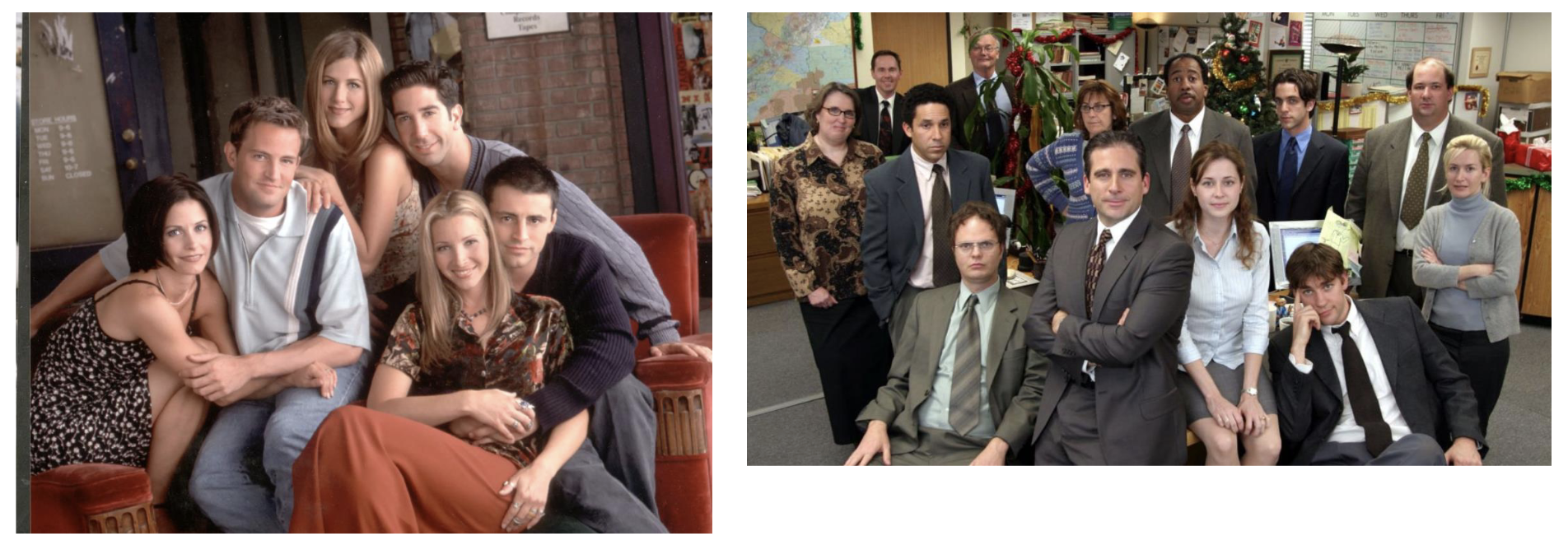

In the context of an organization, the structure of the network is often concrete, such that the network structure becomes independent of the individuals who occupy the network
ex. friends → organizational nodes
Organizational culture
The structure of an organization can be described with reference to its objective features provides a map
It is important to remember, however, that organizations are always also cultural entities
Culture influences the kinds of communicative acts that nodes in a network engage in

Organizations → Institutions
Institutions are made up of multiple organizations that are formally networked
For example, the criminal justice system involves multiple organizations, all of which have their own organized networks
Police
Prosecutors
Courts
Prisons
Other corrections
Institutionalization
Institutionalization is the process by which networks which are at first informal become formally organized, and formally recognized
Institutionalization is both structural and cultural

Example: the institutionalization of organ transplantation
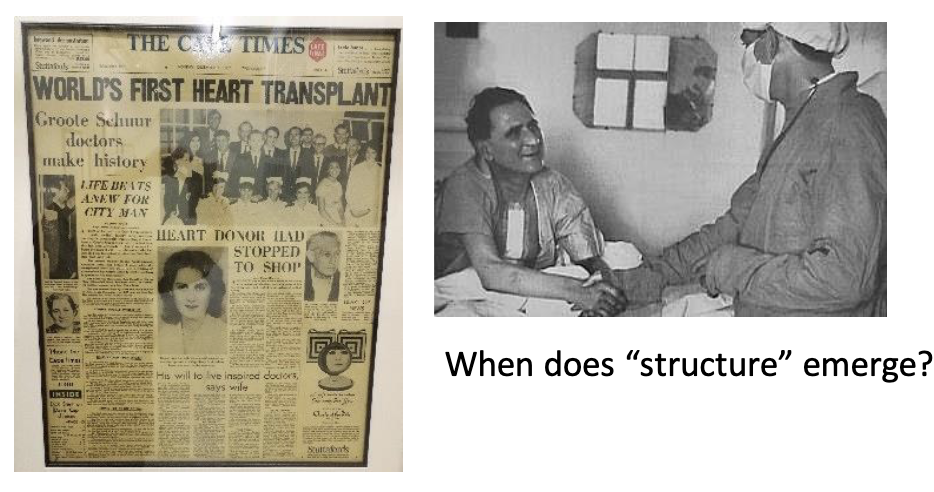 informal structure
informal structure
When does “structure” emerge?
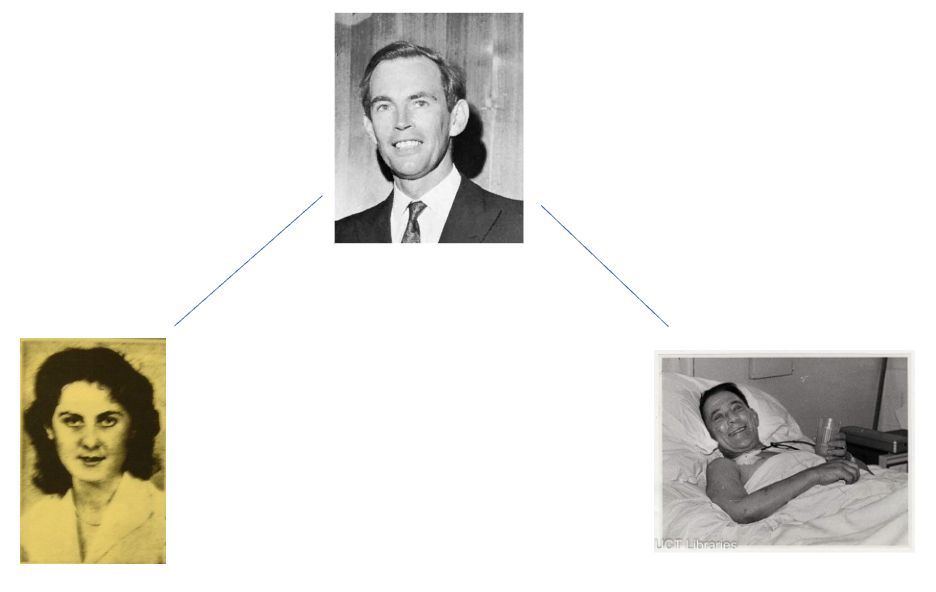 informal spontaneous structure, triad
informal spontaneous structure, triad
E1: experimental procedure period
After the “success” of Barnard’s experimental surgery, other surgeons around the world conducted their own experimental transplant procedures - success is quoted because he only lived 18 days after transplant
No formal way of procuring organs, so transplanted organs were procured haphazardly
No anonymity – names of donors and recipients often published in newspapers - nowadays you wouldn’t know who donated to you
Network composition = surgeons networked together professionally, individual surgeons networked to individual donors and recipients
“Every surgeon a king”
E2: cyclosporine revolution
Prior to the invention of cyclosporine, transplant remained largely experimental because although improvements in surgical procedure were made, little improvement was made in the area of graft rejection
Cyclosporine = powerful anti-rejection medication, fewer side effects than previous anti-rejection medications - technological development
Efficacy of transplant surgery increased → greater demand for transplants
Greater demand for transplants → greater demand for organs
E3: early institutionalization
The most pressing need for the institutionalization of organ transplant had to do with organ procurement
Without a legal framework that recognized “brain-death,” there remained a possibility that surgeons were technically committing murder when they removed organs from brain-dead bodies
1984 (US): National Organ Transplant Act
Legal guidelines for organ procurement
Development of OPOs to facilitate procurement and allocation
Criminalization of organ selling / brokerage
E3 con’t: OPOs
OPOs are “Organ Procurement Organizations”
Operate regionally
Tasked with identifying potential organ donors
Requesting donation from family members
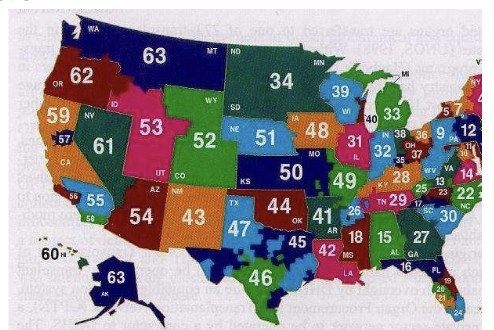
E3 con’t: UNOS
United Network for Organ Sharing
Manages waitlist
Allocates organs
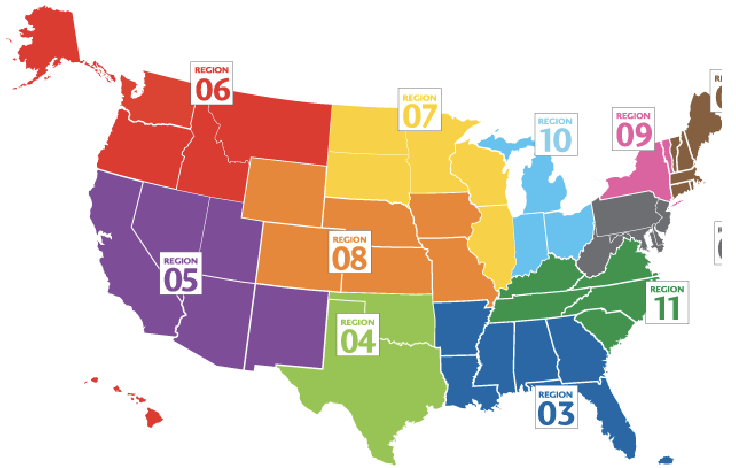
E4: contemporary transplant landscape
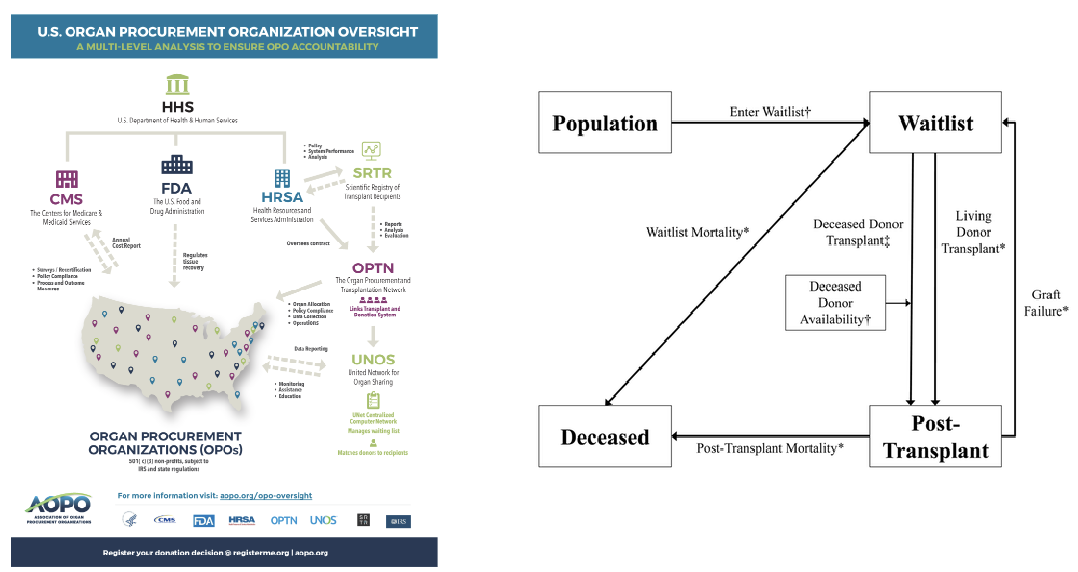
The cultural dimension of institutionalization
In the west today, organ transplantation is widely supported
When organ transplantation was an experimental procedure, however, the public reaction was mixed there is a cultural difference/cultural hesitation
[…] The prospect of these scientific medicos on the prow l after a heart has determined me to take some evasive action on my own behalf. I intend to have a legal document on my person, w ith copies in the hands of my law yer and relatives, that reads something like this: “Should I suffer an accidental or sudden physical breakdow n that may result in death I absolutely forbid my heart to be removed from my body for any reason whatsoever.” This document I hope w ill take me out of the class of heart donor and deter the medical keen types from taking the heart out of me. They might even make an honest try at saving my life. (Adams, John R., 1968 January). Globe and Mail letter to the editor.
convince people that this is a good thing
Culture + institutionalization'

Support for organ transplantation has steadily increased in the West
Acceptance of brain-death (is considered dead at that point)
More resistance to the idea of brain-death in Japan (Crowley-Matoka & Lock, 2006)
Lots of R&D into living donation in Japan
Brain-death remains a public controversy
Studying institutionalization historically
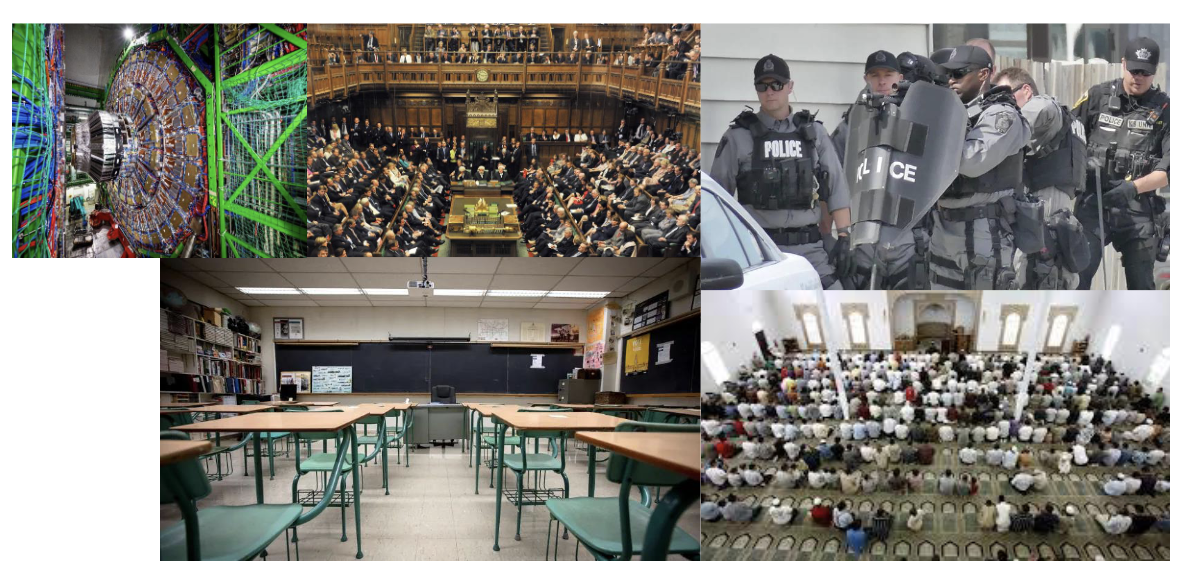
Institutional change
Unlike informal networks, institutions are resistant to change because the behaviour of a person doesn’t have a impact on organizations
Weber: “the iron cage of bureaucracy” the stability of social relations occurs because the interactions of people are being determined
